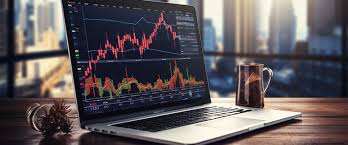
The Ultimate Guide to Forex Trading Platforms
If you’re looking to dive into the world of Forex trading, understanding the importance of a reliable trading platform for forex tradingarea-ng.com is essential to your success. The right platform can significantly impact your trading experience, from executing trades efficiently to providing you with essential trading tools and resources. In this article, we will explore the various aspects of Forex trading platforms, the features that matter, and how to select the best one for your needs.
What Is a Forex Trading Platform?
A Forex trading platform is software that allows traders to access the Foreign Exchange market for the buying and selling of currencies. These platforms serve as a medium through which traders can execute trades, analyze the market, and manage their accounts. Generally, they come in two forms: desktop applications and web-based platforms. Many brokers also offer mobile applications for trading on the go.
Types of Forex Trading Platforms
In the forex trading market, you’ll find several types of platforms that cater to different experience levels and trading styles. Below are the most common types:

- Proprietary Platforms: These are custom-built platforms provided by brokers. They often include unique features tailored to the specific needs of their clients.
- Third-Party Platforms: Well-known platforms such as MetaTrader 4 (MT4) and MetaTrader 5 (MT5) fall into this category. They are popular due to their extensive features and usability.
- Web-Based Platforms: These platforms run in your web browser and don’t require any downloads. They are ideal for users who prefer accessibility and mobility.
- Mobile Trading Apps: Most brokers now offer mobile trading platforms for iOS and Android devices, ensuring traders can manage their accounts anytime and anywhere.
Key Features to Look For
When selecting a Forex trading platform, it’s crucial to consider several features that can enhance your trading experience. Some key features include:
- User Interface: A clean and intuitive interface is essential, especially for beginners. Trading should be straightforward, without unnecessary complications.
- Charting Tools: Access to real-time charting tools is vital for analyzing market trends and making informed decisions. Look for platforms that offer a variety of chart types and technical indicators.
- Execution Speed: Fast execution can make a significant difference, especially in the volatile Forex market. Ensure your platform can handle quick order placements without lag.
- Order Types: The capability to place various order types, such as market orders, limit orders, and stop-loss orders, is crucial for effective risk management.
- Customer Support: Good customer support can save you time and trouble, especially when issues arise. Look for platforms that offer 24/7 support via chat, phone, or email.
- Security: Ensure the platform employs robust security measures to protect your personal information and funds. Look for two-factor authentication and encryption technologies.
How to Choose the Right Forex Trading Platform
Selecting the right trading platform can be a daunting task, given the plethora of options available. Here are some steps to help you make an informed decision:
- Define Your Trading Style: Understanding whether you are a day trader, swing trader, or position trader can help you identify platforms that cater to your specific needs.
- Start with a Demo Account: Most brokers offer demo accounts, allowing you to test the platform without risking real money. This is an excellent way to familiarize yourself with the interface and features.
- Compare Broker Fees: Different platforms come with various fee structures, including spreads, commissions, and withdrawal fees. Make sure to analyze these before making a choice.
- Check for Regulation: Always ensure that your broker and platform are regulated by recognized authorities. This adds a layer of security and trustworthiness.
- Read Reviews and Feedback: Look for user reviews online to get insights into the platform’s reliability and performance. Feedback from other traders can provide useful information about the pros and cons.

Popular Forex Trading Platforms
Here are some of the most popular Forex trading platforms utilized by traders worldwide:
- MetaTrader 4 (MT4): One of the most widely used platforms in Forex trading, MT4 offers advanced charting tools and expert advisor (EA) capabilities for automated trading.
- MetaTrader 5 (MT5): The successor to MT4, MT5 offers additional features, such as more timeframes, improved charts, and access to other markets like stocks and commodities.
- NinjaTrader: This platform is popular among futures and Forex traders, known for its advanced charting features and customizable interface.
- cTrader: A user-friendly platform that offers advanced analytics and trading tools, cTrader is often favored by those trading with ECN brokers.
- Thinkorswim: Offered by TD Ameritrade, this powerful trading platform caters to individual investors and provides a wide range of tools for options and Forex trading.
The Future of Forex Trading Platforms
The Forex trading landscape is constantly evolving, with new technologies and innovations enhancing trading platforms. Features such as artificial intelligence and machine learning are set to transform how traders analyze data and make trading decisions. Additionally, the growth of decentralized finance (DeFi) could influence the way foreign exchange trading is conducted, potentially offering more transparency and reduced costs.
Conclusion
Choosing the right Forex trading platform is a critical step towards achieving success in the currency market. By understanding the various types of platforms, their key features, and how to select the best one for your trading style, you can enhance your trading experience and maximize your potential profits. Always remember to conduct thorough research, utilize demo accounts, and stay updated with market trends to make informed decisions.


